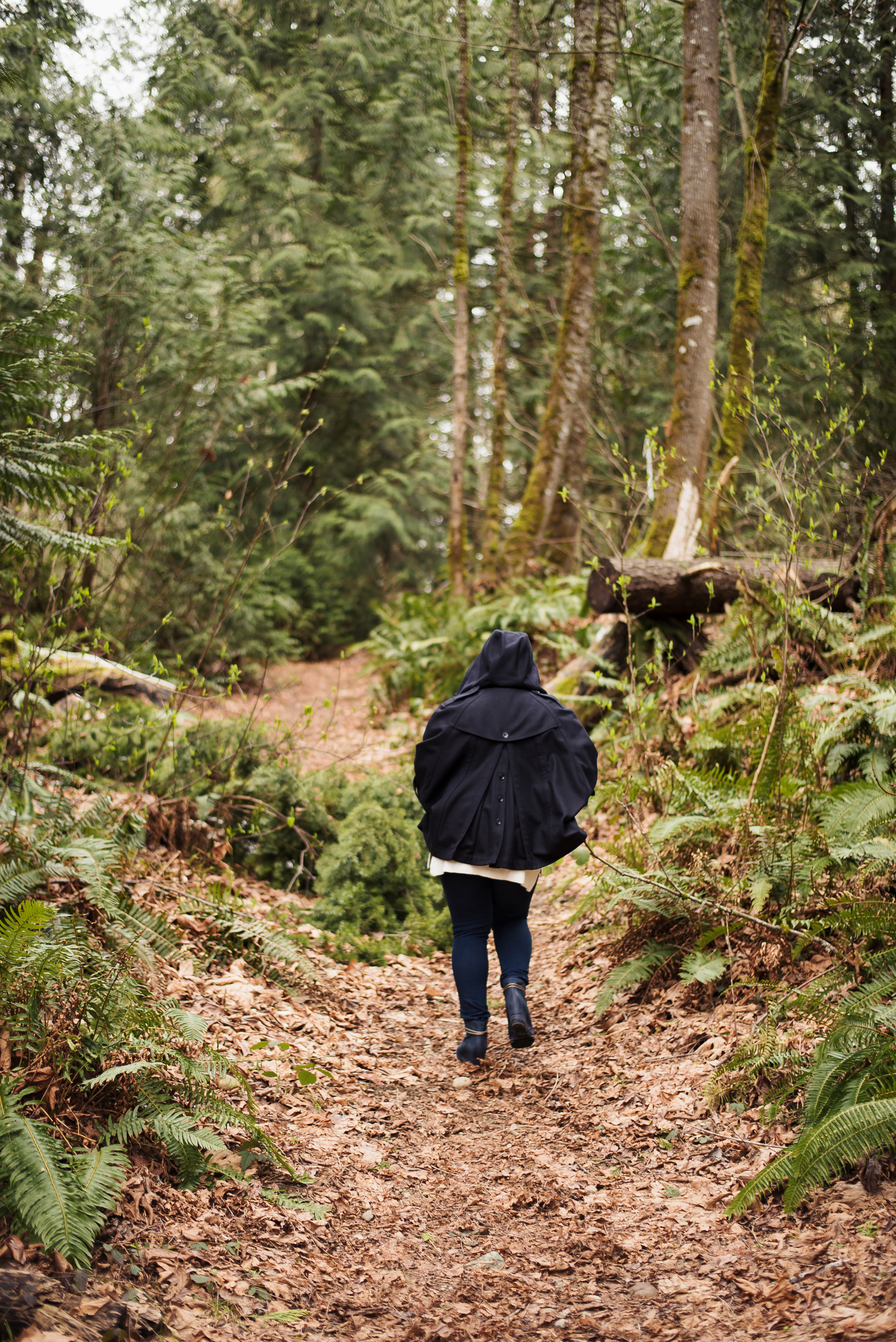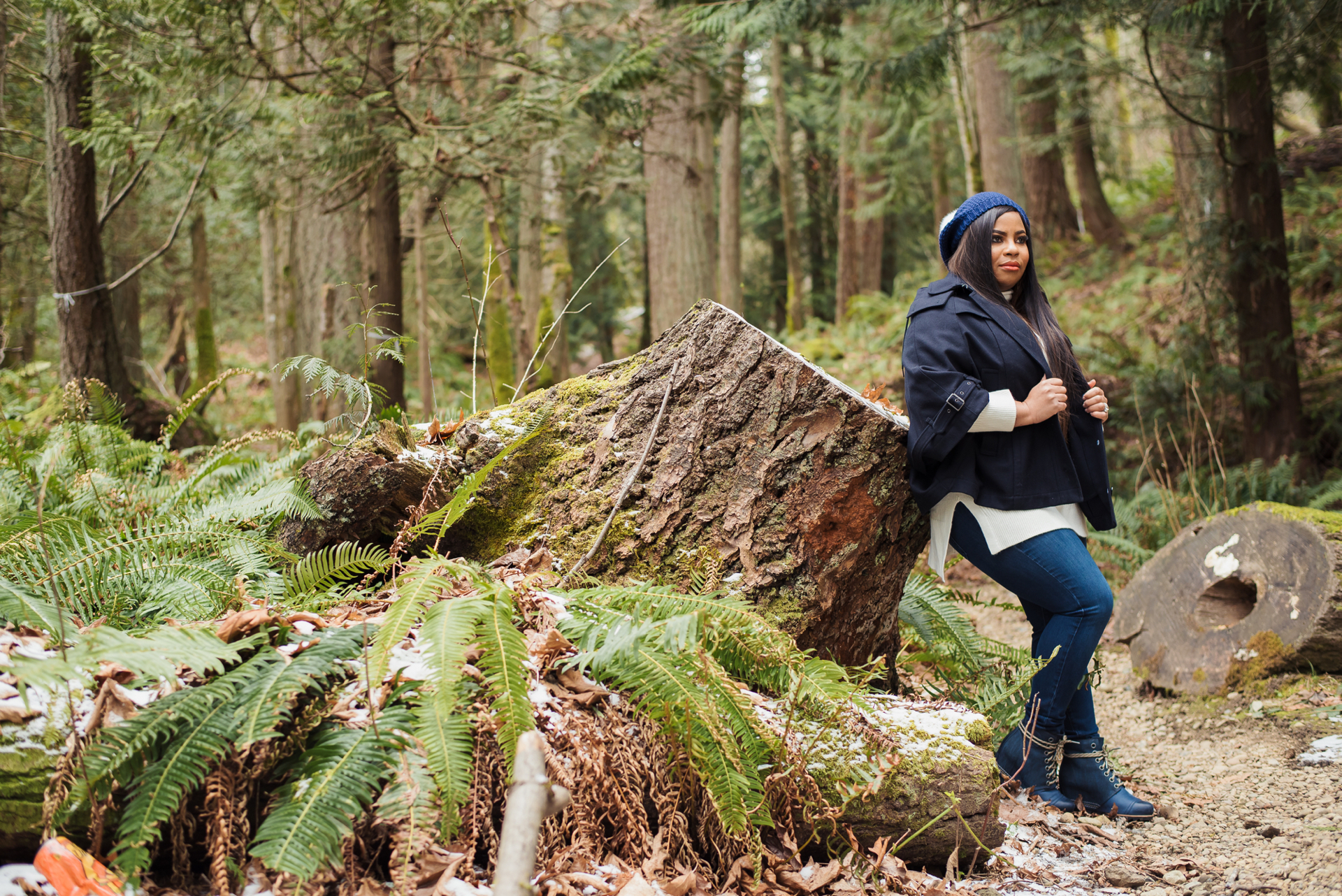MIND, BODY
Forest Bathing: Create Your Own Retreat in Nature
“Truth Moment” – when I was little, I absolutely hated bath time. I was like a cat. I would scratch and become ridged and stiff when it came to bath time. Let’s just say that hygiene wasn’t my number one priority. I was a “tomboy.” I loved to be out in the grass and dirt – bringing everything I could from nature home with me. As I aged, I grew out of that stage and my husband is probably glad to have a wife that now enjoys bath time. It has even become a regular self-care routine for me. As I grew, life moved me away from the outdoors and, before I knew it, I was spending the majority of my day behind a desk and a computer.
With my recent move to Seattle, I have reconnected with my old friend Mother Nature. I have now found myself taking multiple baths per day – one in a tub and one in the forest. “See Mom, I was taking baths all those years ago – I was forest bathing.”



Forest bathing isn’t exactly a bath, but it’s also not a hike, either. It is a meandering, gentle exploration of nature around you with no particular destination in mind and no strategy or routine to follow. It is a time to follow your heart, your intuition, and your instincts. The aim of forest bathing is to slow down and become consumed and immersed in the natural environment around you. This Japanese practice began in 1982. Called Shinrin-yoku, it literally translates to “taking in forest atmosphere” or “forest bathing.” It is the process of soaking up the sights, smells, sounds, and textures of the forest. It’s the indulging experience of taking in all of your surroundings by using all of your senses to promote both physiological and psychological health. The primary difference between hiking and Shinrin-yoku is it centers itself on the therapeutic aspects of this practice. Unlike hiking, forest-bathing’s primary intent is to give you an opportunity to slow down, appreciate the things that can only be appreciated when you take things slowly and move at a slower pace than usual. You walk, you close your eyes and just breathe, you touch the bark of the trees that tower above you, you clear the clutter of your brain and tune into the natural world around you to discover something new and amazing. Forest bathing draws you away from “there” and plants you in the “here and now” of the present moment. Every time I forest bathe, I enter into the canopy, I imagine I am seeing the world for the first time, like through a child’s eyes, and I set out to uncover and discover something new. When I do this, invariably every time I notice something I have never noticed before.
This practice is quickly gaining popularity and has even been seen as an alternative to yoga. Only to be topped by yoga in the forest! In a life where, on average, Americans spend 87 percent of their time indoors and 6 percent in an enclosed vehicle, this practice provides a much needed break from the day to day stressors of life, the monotony, and the feelings of being trapped within the four walls of a cubicle. A 2015 study found that work related stress accounted for up to $190 billion in health care costs. Could this be an answer to our constantly rising healthcare costs, a simple walk in the forest? Many physicians believe it to be a viable answer. Dr. Philip Barr, a physician who specializes in integrative medicine at Duke University states, “ Forest bathing could be considered a form of medicine.”
A study published in 2011, using data from field experiments conducted in 25 forests across Japan, found that subjects who participated in forest bathing had lower blood pressure, heart rate, and concentrations of salivary cortisol – a stress hormone. This is in comparison to those city pedestrians. On average, these forest pedestrians (between the ages of 36 to 77) saw a reduction in their systolic blood pressure form 141 mmHg down to 134 mmHg after a four hour excursion in the forest. As people begin to relax and settle into the atmosphere, their parasympathetic nervous system activates, decreasing the sympathetic nervous response that leads to a drop in blood pressure.
Meandering isn’t the only cause for the decline in blood pressure. The smells of the forest also have a lot to do with this reduction. Trees release their own natural aroma – their own sweet fragrance. These compounds, called phytoncides, are very distinctive (such as the scent of cedar) and, when inhaled, have been found to reduce concentrations of stress hormones in men and women.
Phytoncides also enhance the activity of white-blood cells, known as natural killer cells. These cells are know to selectively seek out and destroy cancer cells and bacterial infections in the body. These “natural killers” (or NK) have the miraculous ability to target a viral infection inside of one of your cells without destroying the entire cell. A study proved that a short three day camping trip increased NK cell activity by an average of 50 percent. WOAH!

So one of the questions you might have is, “Can’t I just get out in the beautiful city landscape and achieve the same results?” There have been studies comparing walking in nature versus walking in an urban atmosphere. What they did find is that people were more relaxed and less stressed amongst the forest than a few trees scattered here and there. They even found that these individuals experienced less over-thinking, which is correlated with depression. A small study of 19 men showed that anxiety, depression, and confusion levels were improved after a forest bathing excursion.
More trees mean more fresh oxygen, giving forest air a noticeably fresher quality than city air. It’s not just that the air is fresher, but the compounds that are released naturally reduce inflammation as well. For example, D-limonene reduces lung inflammation, which is beneficial for those with breathing problems like asthma and COPD. By getting out amongst the trees, these individuals experience an increase in oxygen and a decrease in inflammation.
Even inflammatory skin conditions, like eczema and psoriasis, have been improved by forest bathing. Terpenes are the main anti-inflammatory components expressed by trees into the forest air. These compounds are usually found in conifers, like cypress, fir, and pine trees. Terpenes have also been proven to be effective against inflammation in the brain, liver, and pancreas. They have been shown to improve joint, neck, and back pain, and even protect the brain and nervous system from degenerative diseases like Alzheimer’s.
I have long believed that changing your perspective and having an attitude of gratitude and an overall sense of awe is an effective way to deal with anxiety and depression. David Yaden, a research fellow at the University of Pennsylvania’s Positive Psychology Center, recently published a paper on the awe experienced by astronauts viewing earth from space. He found that the perceptual and conceptual vastness of creation can inspire awe in humans and, in turn, result in soothing effects and improvements to certain good health markers.
Psalm 65:8 tells us, “The whole earth is filled with awe at your wonders; where morning dawns, where evening fades, you call forth songs of joy.” (NIV)
What I love about the forest bathing experience is the long lasting effects. The more you do it the better, but studies have shown that people experienced the benefits when they forest bathed once every one to four weeks. Positive results were even expressed from seven to 30 days after their last forest bath. Coupling that with the proven revitalizing and replenishing results to your system by reducing fatigue and improving sleep makes this even more of an ideal choice for busy people.
Cut the ties that tether you to a life connected by wires and signals. Get out and connect with yourself and nature in a new way. Embrace a return back to The Garden. Submerge yourself in a tub of evergreens and create a new self-care routine.
References:
http://journals.sagepub.com/doi/abs/10.1177/03946320070200S202
https://www.ncbi.nlm.nih.gov/pubmed/27493670

























Test comment.
Reply to comment.